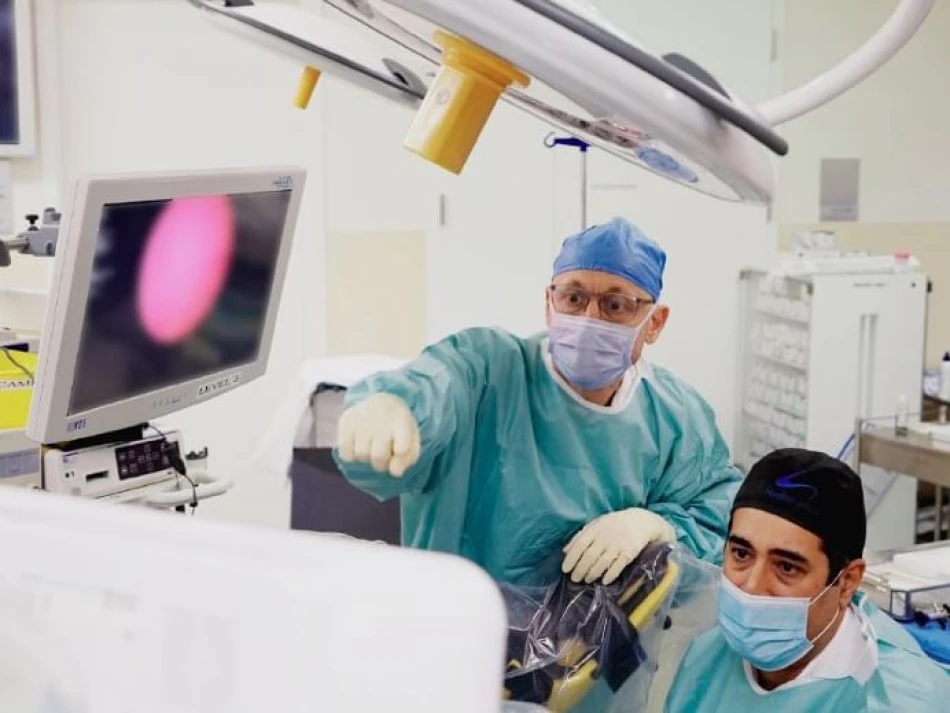
Cleveland Clinic Abu Dhabi Introduces Aquablation Therapy for Benign Prostatic Hyperplasia
UAE Healthcare Takes Major Leap Forward with Revolutionary Prostate Treatment Technology
Cleveland Clinic Abu Dhabi has introduced the UAE's first Aquablation therapy for benign prostatic hyperplasia, marking a significant advancement in minimally invasive medical care. This water-jet procedure, guided by ultrasound and robotic control, eliminates the need for heat-based treatments and dramatically reduces side effects while improving surgical precision—positioning the Emirates as a regional leader in cutting-edge urological care.
A First-of-Its-Kind Medical Innovation in the Gulf
The introduction of Aquablation therapy represents more than just another medical procedure—it signals the UAE's commitment to becoming a global healthcare destination. This robotic water-jet technology addresses one of the most common conditions affecting older men: enlarged prostate, which impacts millions worldwide and traditionally required more invasive surgical interventions.
The timing is particularly strategic. As the UAE's population ages and medical tourism grows, offering world-first treatments strengthens the country's position against regional competitors like Saudi Arabia and Qatar, who are also investing heavily in healthcare infrastructure.
How the Technology Works
The AquaBeam® System Advantage
The procedure utilizes the AquaBeam® robotic system, which employs high-pressure water jets to remove excess prostate tissue without generating heat. This heat-free approach is crucial—traditional methods like laser therapy or electrocautery can damage surrounding tissues, leading to complications such as urinary incontinence or sexual dysfunction.
Dr. Walid Hassan, head of the urology department at the hospital's Institute of Surgical Specialties, emphasized that the technology represents a "radical transformation" in treating benign prostatic hyperplasia, addressing challenges that have long plagued conventional approaches.
Precision Through Dual Imaging
The procedure combines ultrasound imaging with cystoscopy, providing surgeons with unprecedented visibility of critical prostate structures including the bladder neck and external sphincter. This dual-imaging approach ensures precise targeting while preserving vital functions—a significant improvement over traditional "blind" surgical techniques.
Clinical Impact and Patient Benefits
The numbers tell a compelling story. According to Dr. Omar Rahim, a urology consultant at the facility, tissue removal time averages just 5.8 minutes with Aquablation compared to approximately 30 minutes for traditional transurethral resection procedures. This efficiency translates to reduced anesthesia time, lower infection risks, and faster recovery periods.
Dr. Zaki Al-Mallah, another urology consultant, highlighted that the treatment is typically performed once and provides long-term symptom relief—a crucial factor for elderly patients who may not be candidates for repeat procedures.
Strategic Healthcare Positioning
Regional Competition Intensifies
This development comes as Gulf nations increasingly compete for healthcare excellence. The UAE's move mirrors Singapore's strategy of introducing cutting-edge medical technologies to attract international patients, while Saudi Arabia's Vision 2030 includes massive healthcare investments. By securing first-in-region status for advanced procedures, the UAE maintains its competitive edge.
Investment and Infrastructure Support
The technology's introduction reflects broader support from Abu Dhabi's Department of Health and Mubadala Healthcare, demonstrating coordinated public-private investment in medical innovation. This institutional backing suggests more advanced technologies will likely follow, potentially establishing the UAE as a regional hub for minimally invasive procedures.
Market Implications and Future Outlook
For healthcare investors, this development signals the UAE's commitment to premium medical services that can command higher margins than basic care. The focus on minimally invasive procedures aligns with global healthcare trends toward outpatient treatments and faster recovery times.
The technology's success could accelerate adoption of other robotic-assisted procedures across the Emirates, potentially attracting medical device companies to establish regional headquarters or training centers in the country. This creates a multiplier effect, generating jobs, expertise, and additional foreign investment in the healthcare sector.
As the UAE continues positioning itself as a bridge between Eastern and Western medical practices, innovations like Aquablation therapy demonstrate the country's ability to rapidly adopt and implement breakthrough technologies—a capability that will prove increasingly valuable as global healthcare evolves toward precision medicine and robotic assistance.
 Sara Khaled
Sara Khaled







